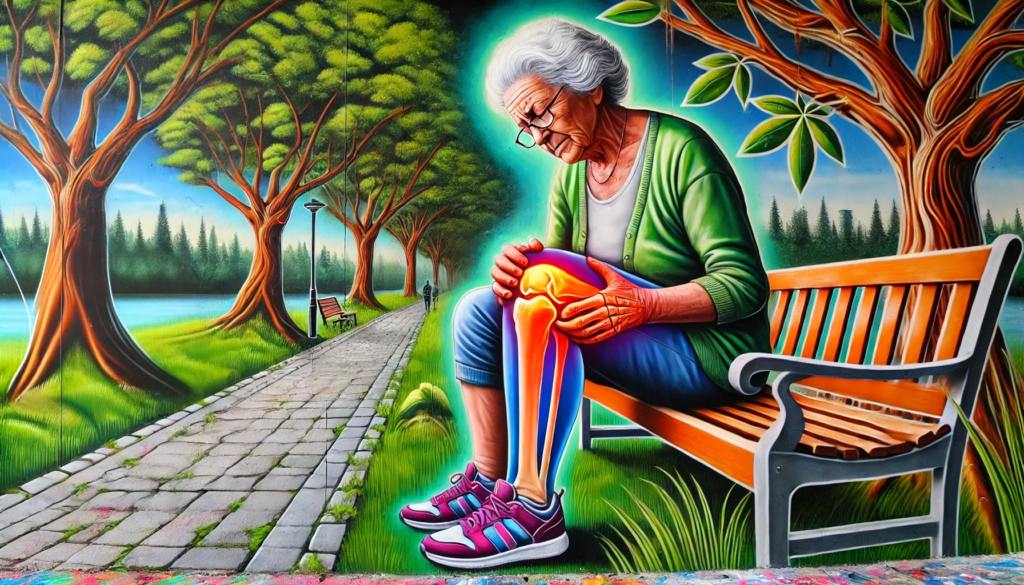Joint pain management…. Living with joint pain can be challenging, but with the right approach, you can manage your symptoms and still lead an active life. Understanding the causes of joint pain and recognizing the early signs are key to finding relief. Whether it’s due to arthritis, injuries, or daily wear and tear, joint pain affects millions of people, but there are ways to control it.
Taking a proactive approach to joint pain management can make a huge difference. From simple lifestyle changes to medical treatments, you have options. By staying informed and making smart choices, you can reduce pain, improve mobility, and maintain a higher quality of life.
Joint Pain Management through Exercise.
One of the best ways to manage joint pain is by staying active. Low-impact exercises like walking, swimming, and cycling help keep your joints flexible without adding too much strain. Physical activity strengthens the muscles around your joints, providing better support and reducing pain.
Stretching and strength training are also great for joint pain management. Gentle stretches improve flexibility, while light strength exercises build muscle to support your joints. Always consult a healthcare provider or physical therapist to ensure you’re doing exercises that are safe and effective for your specific needs.
Joint Pain Management with Diet and Nutrition.
Diet plays a big role in joint pain management. Eating anti-inflammatory foods like fish, leafy greens, and berries can help reduce joint swelling and discomfort. Omega-3 fatty acids, found in fish and walnuts, are especially helpful in reducing inflammation.
Avoiding processed foods, sugary snacks, and excessive alcohol is just as important. These can increase inflammation and make joint pain worse. By focusing on a balanced, nutrient-rich diet, you give your body the tools it needs to support joint health and ease pain.
Joint Pain Management: What Causes It?
Joint pain can happen for many reasons. One common cause is arthritis. There are different types of arthritis, like osteoarthritis and rheumatoid arthritis. Osteoarthritis happens when joints wear out over time. Rheumatoid arthritis is when the body attacks its own joints. Besides arthritis, injuries like sprains and strains can also cause joint pain.
Lifestyle choices also affect joint pain management. Poor posture can put extra stress on your joints. Not exercising enough can make your muscles weak, which supports your joints. Carrying extra weight makes your joints work harder. These factors can make joint pain worse and harder to manage.
Joint Pain Management: How to Handle It?
Managing joint pain starts with recognizing the symptoms. If you feel pain, stiffness, or swelling in your joints, it’s important to take action. Early treatment can help reduce the pain and stop it from getting worse. Talking to a doctor can give you the right plan to manage your joint pain.
Making healthy lifestyle changes is also key to joint pain management. Regular exercise strengthens the muscles around your joints, providing better support. Eating a balanced diet helps maintain a healthy weight, reducing stress on your joints. Using good posture and taking breaks during repetitive activities can also help keep your joints feeling better.

The Importance of Early Diagnosis and Intervention.
Early Detection for Joint Pain Management.
Catching joint pain early is crucial. If you notice symptoms like stiffness, pain, or swelling, it’s important to act quickly. Seeking medical advice early can help stop the pain from getting worse. The sooner you address it, the more options you have for treatment.
Early consultation with a doctor allows them to run tests like X-rays or MRIs. These tests help pinpoint the cause of your pain. With this information, your doctor can create a personalized treatment plan to manage your joint pain effectively.
Customized Treatment for Joint Pain Relief.
Once diagnosed, tailored treatment is key for joint pain management. Medications can reduce inflammation and ease pain. Physical therapy strengthens muscles around the joints, improving flexibility and mobility. Combining both treatments often gives the best results.
Lifestyle changes, like losing weight or staying active, also play a big role in managing joint pain. Low-impact exercises like swimming or walking can keep your joints strong and flexible without causing stress. These strategies work together to help you manage joint pain long term.
Preventing Joint Pain with Healthy Habits.
Preventing joint pain starts with simple daily habits. Maintaining a healthy weight can lower the strain on your knees, hips, and spine. Good posture and proper body mechanics can also help reduce stress on your joints, preventing future pain.
Regular exercise keeps your joints flexible and strong. Activities like yoga or cycling are easy on the joints while still providing good physical activity. Making these healthy choices can help prevent joint pain and keep you feeling mobile for years to come.
Diet and Nutrition: Building Blocks for Joint Health.
Omega-3 Fatty Acids for Joint Health.
Omega-3 fatty acids are crucial for reducing inflammation in the body, which is a common cause of joint pain. These healthy fats can be found in fish like salmon, mackerel, and sardines, as well as plant-based sources like flaxseeds and chia seeds. Including these foods in your meals regularly can help decrease inflammation that contributes to conditions like arthritis and other joint issues.
In addition to their anti-inflammatory properties, omega-3s can improve joint mobility and reduce stiffness. Walnuts and other nuts are also good sources of omega-3 fatty acids. Adding them to your diet as snacks or in meals helps support better joint function. Regularly incorporating omega-3-rich foods can be a natural way to manage and prevent joint discomfort.
Antioxidants to Protect Joints.
Antioxidants are another key player in maintaining joint health. They help protect your body from damage caused by free radicals, which can contribute to inflammation and joint pain. Fruits like berries, oranges, and grapes, along with vegetables like spinach, kale, and broccoli, are rich in antioxidants like vitamins C and E. These vitamins are essential for fighting inflammation and keeping your joints protected from damage.
Drinking green tea is another excellent way to boost your antioxidant intake. Green tea contains powerful compounds that not only reduce inflammation but may also slow the progression of arthritis. Incorporating antioxidant-rich foods and beverages into your daily diet can be an effective strategy for reducing joint pain and keeping your joints functioning properly over the long term.
Strong Joints With Calcium and Vitamin D.
Calcium and vitamin D are essential for keeping your bones and joints strong. Calcium is necessary for maintaining bone density, which helps protect your joints from the stress of daily movement. Good sources of calcium include dairy products like milk, yogurt, and cheese, as well as plant-based options like fortified almond milk and leafy green vegetables like kale and broccoli.
Vitamin D helps your body absorb calcium efficiently. Without enough vitamin D, your bones can weaken, putting extra strain on your joints and increasing the risk of joint pain. Spending time in the sun helps your body produce vitamin D naturally, but if that’s not possible, foods like fatty fish and fortified cereals can help. If you’re not getting enough from your diet, consider taking supplements after consulting with your healthcare provider to ensure your bones and joints remain strong.
Foods to Avoid for Joint Pain.
Certain foods can worsen inflammation, making joint pain more severe. Processed foods, sugary snacks, and excessive alcohol are all known to increase inflammation in the body. Highly processed foods like fast food, frozen meals, and packaged snacks often contain unhealthy fats and added sugars that can trigger inflammation. Reducing your intake of these foods can help ease joint discomfort over time.
Instead, focus on whole, unprocessed foods that nourish your body without causing inflammation. Choose fruits, vegetables, lean proteins, and whole grains. Not only will this improve your overall health, but it will also help keep your joints in better condition. By avoiding foods that fuel inflammation, you give your joints the best chance to stay strong and pain-free, making it easier to manage conditions like arthritis and prevent further discomfort.

Exercises and Physical Therapy: Staying Active with Joint Pain.
Why Staying Active is Key for Joint Pain Management.
Staying active helps reduce joint pain. Exercise strengthens muscles around the joints, which provides support and reduces discomfort. It also improves flexibility, making it easier to move without stiffness. While it may feel challenging, moving your body is one of the best ways to ease joint pain.
Low-impact exercises, like swimming and walking, are perfect for joint pain sufferers. They are gentle but still provide a good workout. These activities help you stay mobile without putting too much stress on your joints, keeping them healthy.
The Best Low-Impact Exercises for Joint Pain.
Low-impact exercises are gentle on the joints. Swimming, cycling, and walking can improve your fitness without causing pain. These activities let you stay active and maintain your mobility, which is crucial for joint health.
Stretching exercises are just as important. They help you stay flexible and reduce stiffness. Try yoga or Pilates to stretch your muscles and build strength without straining your joints. These routines can make a big difference in how your joints feel.
Physical Therapy: A Personalized Approach to Pain Relief.
A physical therapist can help manage joint pain with a custom exercise plan. They focus on your specific needs and teach proper techniques. This prevents further injury and helps you get the most benefit from your workouts.
Physical therapy also focuses on building strength safely. Light weights or resistance bands can be used without adding too much pressure on your joints. This makes strength training more effective and safe for people with joint pain.
Balance and Strength Training for Joint Health.
Balance exercises are vital for joint health. Good balance lowers the risk of falls, which can worsen joint pain. Simple exercises like standing on one leg or using a balance board can help. Try adding these to your daily routine to improve stability.
Strength training helps build muscle to support your joints. Start slow with light weights or resistance bands to avoid straining your joints. Over time, this will make your muscles stronger, easing joint pain and helping you stay active.
Pharmacological Solutions: Medications and Their Efficacy.
Over-the-Counter Medications for Joint Pain Relief.
When joint pain strikes, over-the-counter (OTC) pain relievers are often the first choice. Nonsteroidal anti-inflammatory drugs (NSAIDs) like ibuprofen and naproxen can reduce both pain and swelling. These common medications are easy to find and can be highly effective for mild to moderate pain.
Another option is acetaminophen, which targets pain but doesn’t address inflammation. It’s a good choice if your pain isn’t caused by swelling. Always follow dosage instructions carefully and talk to a doctor if OTC options aren’t enough.
Prescription Medications for Severe Joint Pain.
For more severe joint pain, doctors may prescribe stronger medications. Prescription NSAIDs provide greater pain and inflammation relief than OTC versions. In extreme cases, opioids might be prescribed, but they come with higher risks. Opioids are very strong and can lead to addiction, so they should only be used under a doctor’s care.
Corticosteroids are another powerful prescription option. These can be taken as pills or injected into the joint. They reduce inflammation quickly, but long-term use can lead to side effects like bone weakness. Always consult your doctor about these options.
Topical Treatments for Targeted Joint Pain Relief.
Topical treatments provide a targeted way to manage joint pain. Creams and gels containing NSAIDs or other pain-relieving ingredients can be applied directly to the skin over the painful joint. This method helps reduce pain without affecting the whole body.
Using topical treatments can be a good alternative to oral medications, especially for those who want to avoid side effects. Talk to your doctor to see if a topical option is right for your joint pain.

Alternative Therapies: Exploring Non-Traditional Solutions.
Exploring Acupuncture for Joint Pain Relief.
Acupuncture has been used for thousands of years to relieve pain. It involves inserting thin needles into specific points on the body to help balance energy and promote healing. Many people report reduced joint pain and inflammation after acupuncture sessions.
This ancient practice is gaining popularity as a complementary therapy for joint pain management. Always consult with a licensed acupuncturist to ensure safe and effective treatment tailored to your needs.
Acupressure: A Needle-Free Option for Joint Pain.
Acupressure is similar to acupuncture but uses finger pressure instead of needles. By pressing on specific points, acupressure can help release muscle tension and improve blood flow. This makes it a great option for localized joint pain relief.
Many find acupressure helps with relaxation and pain management. It’s an easy and non-invasive way to explore alternative joint pain treatments, especially for those who may be hesitant about needles.
Herbal Remedies: Natural Solutions for Joint Pain.
Herbal remedies like turmeric, ginger, and Boswellia offer anti-inflammatory benefits. These herbs can be taken as supplements or brewed into teas to help reduce joint pain naturally. Many find them to be a helpful addition to their pain management plan.
Before starting any herbal remedies, always check with your doctor. This ensures that these natural treatments won’t interfere with other medications you’re taking.
Chiropractic Care and Massage Therapy for Joint Health.
Chiropractic care focuses on adjusting the spine and joints to improve alignment. Many people find that regular adjustments help relieve joint pain and improve mobility. It’s an effective alternative for managing chronic pain without medication.
Massage therapy can also help reduce joint pain by easing muscle tension. Techniques like Swedish or deep tissue massage increase circulation, promoting healing and relaxation. Both chiropractic care and massage therapy are great complementary options for joint pain management.

Innovative Treatments and Technologies.
PRP Therapy: Boosting Natural Healing for Joint Pain.
Platelet-Rich Plasma (PRP) therapy is a cutting-edge treatment for joint pain. It uses your own blood to promote healing. Doctors take a small sample, concentrate the platelets, and inject the plasma into your painful joint. This can help repair tissues and speed up recovery.
Many people find PRP therapy offers long-lasting pain relief. It’s a non-invasive option that uses your body’s natural healing abilities, making it an exciting alternative for joint pain management.
Regenerating Damaged Joint Tissue With Stem Cell Therapy.
Stem cell therapy is another exciting advancement in joint pain management. Stem cells can turn into different types of cells, including those needed for joint repair. When injected into the joint, these cells may help regenerate damaged tissues, reducing pain and improving function.
While still being researched, many patients report great results. It’s an innovative option for those looking for alternatives to traditional treatments, offering new hope for long-term joint health.
Minimally Invasive Surgeries for Faster Recovery.
Minimally invasive surgeries are changing the game for joint pain sufferers. Procedures like arthroscopy use tiny incisions to diagnose and treat joint problems. This approach means less pain, shorter recovery time, and fewer complications compared to traditional surgeries.
These advanced surgical techniques allow patients to get back on their feet faster. Talk to your doctor to see if minimally invasive surgery is right for your joint pain, especially if other treatments haven’t worked.

Lifestyle Modifications for Long-Term Joint Health.
Ergonomics: Reducing Joint Strain at Home and Work.
Proper ergonomics can prevent joint pain. Use ergonomic chairs and desks to reduce pressure on your joints, especially if you sit for long hours. Make sure your computer setup promotes good posture, which helps protect your joints.
Simple changes, like adjusting your chair height or using a footrest, can make a big difference. By improving your workspace, you can prevent joint strain and discomfort over time.
Maintaining a Healthy Weight for Joint Protection.
Maintaining a healthy weight is crucial for joint health. Extra weight puts pressure on your knees, hips, and lower back, leading to pain. A balanced diet and regular exercise can help you achieve and maintain a healthy weight, reducing stress on your joints.
Every pound lost reduces the strain on weight-bearing joints, which can lead to long-term pain relief. Talk to your doctor about a safe weight loss plan to improve your joint health.
Mindfulness and Stress Reduction for Joint Pain Relief.
Mindfulness techniques can help manage joint pain. Practices like meditation and deep breathing lower stress levels, which can reduce muscle tension and joint discomfort. Yoga, which combines mindfulness and movement, can also improve flexibility and ease pain.
These techniques benefit both your mind and body. Lower stress means less pain, and staying mentally strong helps you better cope with chronic joint issues.
The Importance of Proper Footwear for Joint Health.
Good footwear can significantly reduce joint pain. Shoes with proper support and cushioning help absorb impact, especially when standing or walking. Wearing the right shoes can relieve pressure on your knees, hips, and lower back.
Consider consulting with a footwear specialist to find the best shoes for your needs. Proper support can make a big difference in how your joints feel throughout the day.

Creating a Personalized Joint Pain Management Plan.
Assessing Your Unique Joint Pain Needs.
Every person’s joint pain is different, so it’s important to assess your own situation carefully. Consider the type and severity of your pain, as well as how it impacts your daily activities. Keeping a pain journal can help you track symptoms and spot patterns, which will give you valuable information for managing your condition.
By understanding your unique pain triggers and patterns, you can create a plan tailored to your needs. This personalized approach ensures that you focus on treatments that will work best for your specific type of joint pain.
Combining Multiple Treatments for Better Results.
Managing joint pain effectively often requires a mix of treatments. Your plan might include exercises that strengthen muscles, an anti-inflammatory diet, and medications for pain relief. Adding alternative therapies like acupuncture or massage can further enhance your results.
A multifaceted approach works because it tackles joint pain from different angles. By combining treatments, you can reduce inflammation, improve mobility, and manage pain more effectively, giving you a better quality of life.
The Importance of Regular Healthcare Check-ins.
Consistent check-ins with your healthcare provider are essential for managing joint pain. These appointments let you discuss your progress, adjust treatments, and explore new therapies. Your doctor can also monitor any side effects from medications and make changes to your plan if necessary.
Regular check-ins ensure that your plan stays effective over time. As new treatments become available or as your condition changes, your doctor can help you make the necessary adjustments to keep your joint pain under control.
Building a Support System for Joint Pain Management.
Support is key when managing joint pain. Connecting with support groups, whether in-person or online, allows you to share experiences, gain advice, and find comfort in knowing you’re not alone. Emotional support can be just as important as physical treatments in managing chronic pain.
A strong support system helps you stay motivated and positive. Engaging with others who understand your struggles makes it easier to stick with your personalized pain management plan and adapt as needed.
Living a Full Life Despite Joint Pain.
Embracing a Positive Mindset for Joint Pain Management
Focusing on what you can do rather than what you can’t is key to managing joint pain. Adopting a positive mindset helps you stay motivated, even on tough days. Celebrate small victories, like completing a gentle exercise or sticking to your routine, to boost morale and keep moving forward.
Finding joint-friendly activities is important for staying active. Whether it’s swimming, walking, or even new hobbies like gardening, discovering activities that you enjoy helps improve both your physical and mental well-being. A positive outlook makes all the difference in how you manage joint pain.
Building a Strong Support Network for Joint Health
Having a solid support system makes managing joint pain easier. Surround yourself with family, friends, and healthcare professionals who understand your challenges. They can offer encouragement and help when needed, whether it’s assisting with tasks or simply offering a listening ear.
Don’t be afraid to ask for help when you need it. Everyone needs support, especially when managing a chronic condition like joint pain. Leaning on others for assistance not only lightens your load but can also improve your overall quality of life.
Staying Informed and Practicing Self-Care
Keeping up with the latest research on joint pain treatments is important. New therapies and management strategies are constantly emerging, so staying informed ensures you have the best options available. Talk to your healthcare provider about new treatments that may benefit you.
Prioritizing self-care is also crucial. Incorporate relaxation techniques, hobbies, and adequate rest into your daily routine. Listening to your body allows you to adjust your activities on tougher days, giving yourself the care you need. Self-care is a key part of long-term joint pain management.
Joint Pain Management Conclusion.
Effective joint pain management requires a balanced and proactive approach. By combining treatments, regular exercise, and a healthy diet, you can reduce pain and improve how your joints feel. Staying updated on new treatments like PRP therapy and minimally invasive surgeries gives you more options to explore. A well-rounded plan helps you control pain and stay active.
Simple lifestyle changes, like keeping a healthy weight, using good posture, and practicing self-care, are key to long-term joint pain management. A positive mindset and support from family or friends also make a big difference. With the right strategies, you can live a full life and enjoy the activities you love without letting joint pain hold you back.


